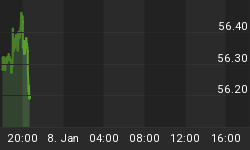Introduction
Over the last several weeks, the US dollar's exchange rate value has taken a serious beating. As of yesterday's close, the Dollar Index had sunk to levels not seen in more than a year, but a year ago, the index was in trending up. That rally took the index to a final high of a little over 92, set last October. Since then, this closely watched measure has fallen more than 8%, with an inordinate amount of the overall damage occurring since the end of March.
Can there be any doubt that the nation's record current-account and trade deficits have begun to take a serious and growing toll on the dollar? I think not. In turn, I believe the dollar's slide also has begun to make an increasing contribution to the poor recent performance at the longer end of the Treasury yield curve.
And if the dollar continues its swoon, can a negative impact on the US stock market, one far worse than today's, be avoided much longer? To this, my answer is the same as above: I think not. I remind readers that the stock-market crash in October 1987 began months earlier as a dollar problem, that then became an interest-rate problem, that then became a stock-market problem -- a very, very big stock-market problem!
Tomorrow (5/12), the Commerce Department will release trade data for March. In advance of that report, the balance of this missive contains some numbers to look at and to think about. Continue to Gillespie Research for the balance of the essay: http://www.gillespieresearch.com/cgi-bin/s/article/id=838.
















